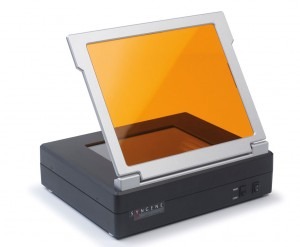
Cambridge-based Syngene has unveiled its UltraBright-LED transilluminator designed to safely image fluorescent gel labels
The UltraBright-LED uses two high intensity LED arrays which produce uniform, bright excitation at 470nm, and can illuminate dyes that excite at 420 to 480nm.
As a result, the system is suitable for visualising small amounts of Ethidium Bromide and non-toxic DNA stains including Syngene's new UltraSafe Blue dye, SYBR Safe and GelGreen, as well as protein stains such as SYPRO Ruby and Pro-Q Diamond.
Since the UltraBright-LED uses blue light, researchers imaging non-toxic stains can use the system directly on the bench.
The transilluminator has been designed to slide in and out of any Syngene G:BOX imaging system, making the UltraBright-LED ideal for visualising faint bands, allowing precise band cutting and production of high quality images for analysis and publication.
Laura Sullivan, Syngene's Divisional Manager said: "Blue light transilluminators are an alternative to UV when scientists work with non-toxic fluorescent dyes." Sullivan added that the advantage of using blue light is that it is a safe light source which can be used on the bench, as it is not as harmful as UV and does not photo-nick DNA samples.




